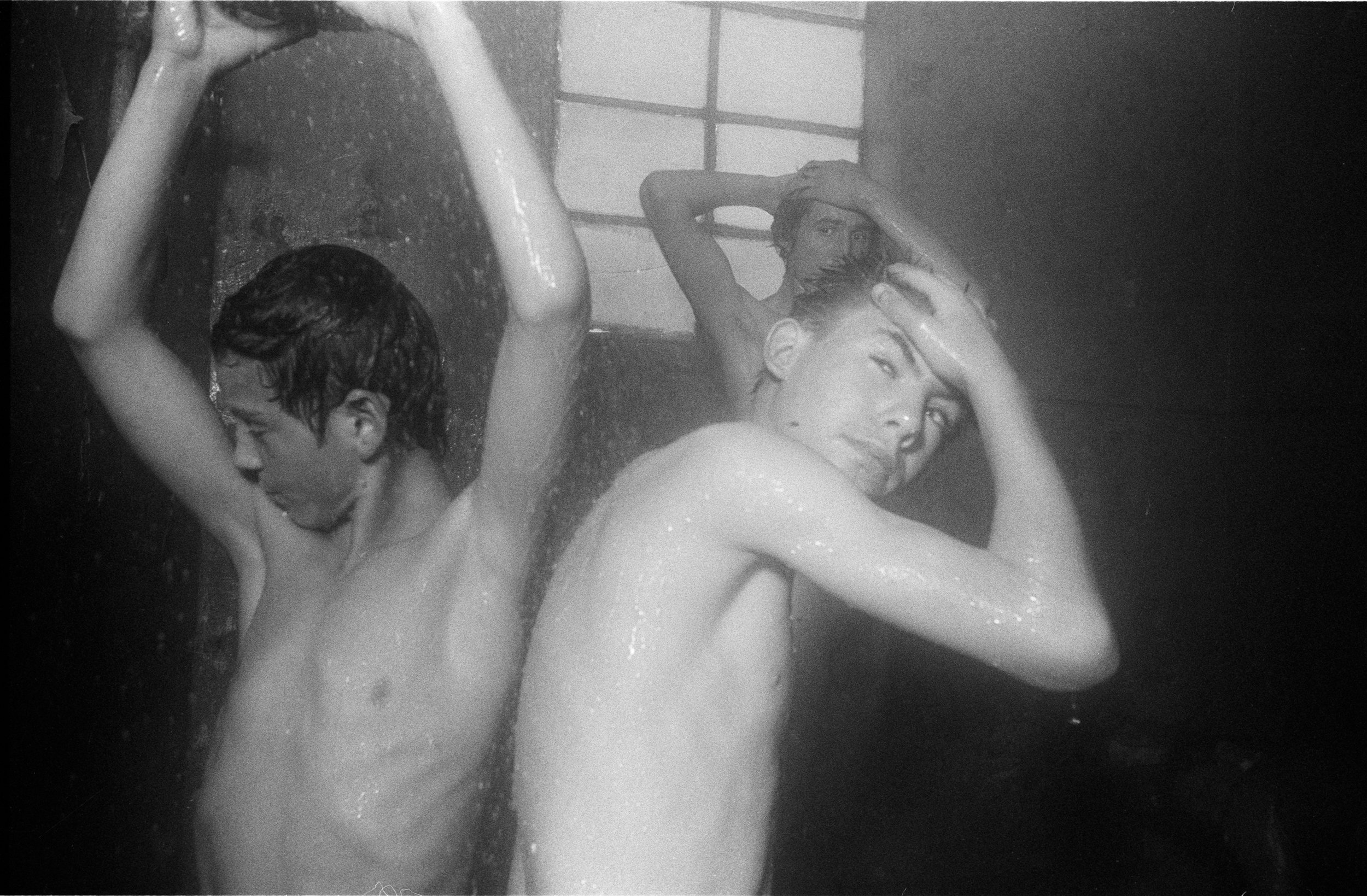The public bath is a familiar experience of Western man. It has almost become, recently, an intergral part of his health program, such as jogging or racquetball playing. Laurence Salzmann’s preoccupation with the Bathhouse of Rădăuţi reflects more than just a study of the Male Nude: there is a certain curiosity about the nature of social relationships there. As he writes elsewhere, “the whole bathing process represented a kind of social ritual; the same men met there week after week, joking gossiping and telling stories to catch each other’s attention.”
These men seemed to develop bathing into a group activity. They washed each other’s backs, beating them with oak branches (an ancient custom). Even though the communal aspect of bathing is clearly emphasized in Salzmann’s images, individuals are caught in a state of silent meditation, as well.
The ambience of the Bathhouse interior is simple and naked, in a sense, matching with the clear outlines of these relaxed bodies. The fat pipes with over sized faucets, the wide oak benches, and the plastic buckets near each body are all part of the starkness of the environment. Though we cannot hear it we can sense the heavy monotone of the steam as it belches out of the ancient cast iron stove. Such a feeling of warmth envelops the relaxed, drowsy bodies, then! Salzmann’s bath people are set in motion, they look and feel at home with their bodies; the old and the fat mingle with the young.
In this portfolio of ten photographs, Laurence Salzmann has added a new dimension to his craftsmanship as a portrait maker: the subtle motions of the total body, in harmony with the environment. And, above all, the beauty of these photographs lies in the total composition of the natural bodily gestures.































